If you can sew five straight lines, you can make this simple curtain pattern for any room in your house! Even beginners can sew this basic curtain pattern.
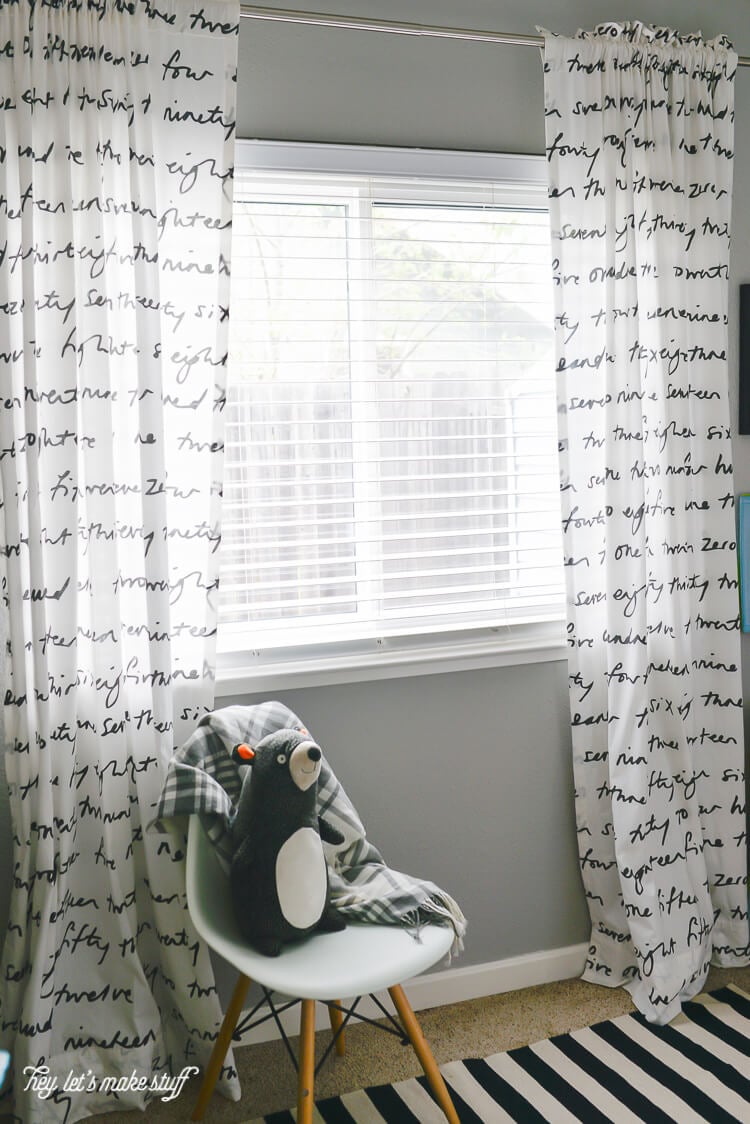
We’re giving our home office / library a makeover, and I thought this IKEA fabric was the perfect fabric to complement the literary nature of the room. Plus, it’s a whopping $4.99 a yard—if you’ve ever purchased enough fabric to make curtains, you know that’s a bargain.
And along with new curtains for me, comes a simple curtain pattern for you! These curtains are unlined and definitely let in a lot of light and offer little privacy. But if you use a heavier fabric, you can still use this basic curtain pattern and get more privacy in the end.
There are a lot of tutorials for no-sew curtains, but come on ladies (and gents), you can learn to sew a straight line! These curtains are a great beginner project because each curtain has only five straight lines of sewing (see below). For two custom curtain panels, you can sew ten straight lines! They don’t even have to be that straight! And because they are sewn, they should last longer than curtains made exclusively with fusible hem tape.
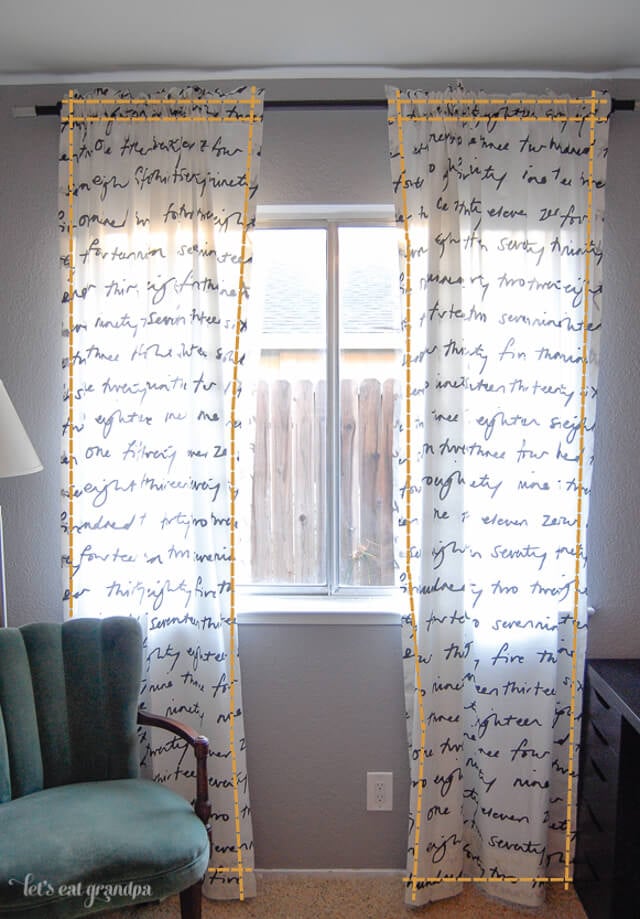
Supplies for this Simple Curtain Pattern
- Fabric (yardage determined below)
- Coordinating thread
- Ruler
- Scissors or rotary cutter
- Disappearing ink marker
- Pins
- Fusible hem tape
Determining Fabric Yardage:
For floor to ceiling curtains (my personal favorite because it adds drama and softness to a room), take the height of your ceiling and add 14″ for the top and the bottom hems. So, if you have a 96″ ceiling (8′), you will have a total of 110″ fabric for each panel. Double that for two panels and you have 220″ of fabric, or just over 6 yards. I bought 7 yards just to be safe, and have enough left over to make some matching pillows.
If you want another length (say, the height of the window + curtain rod), use that for your height measurement, and still add the 14″.
I suggest buying fabric that is at least 60″ wide. Standard 45″ fabric is just too narrow for most windows, if you fully want to close the curtains. Most home decor fabric is 60″.
Instructions for this Simple Curtain Pattern
Cutting the Panels
Measure out the full height of your first panel, with the hem allowances (using the above calculation, it would be 110″). You don’t have to be super exact, there is plenty of fabric to hem with. Just get close.
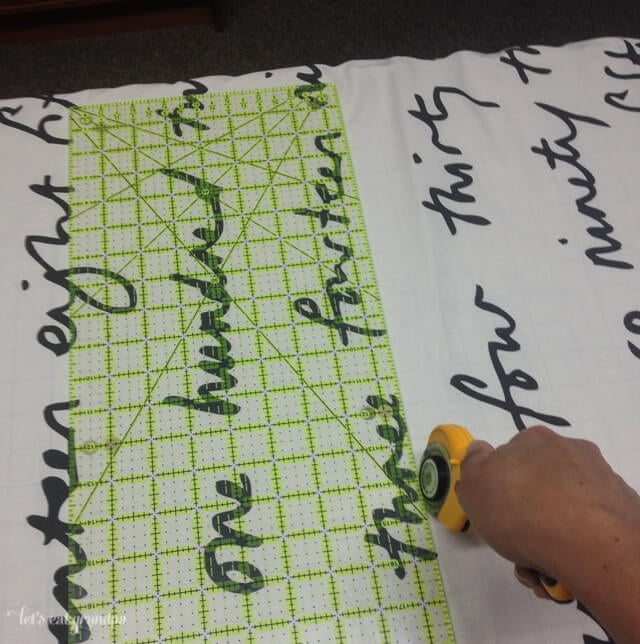
Cut both 110″ panels. I use a rotary cutter and mat, but you could just as easily use scissors.
This particular fabric had writing on the selvage. Creating a nice side edge requires me to turn the fabric under, and the writing showed through to the front. Not cool.
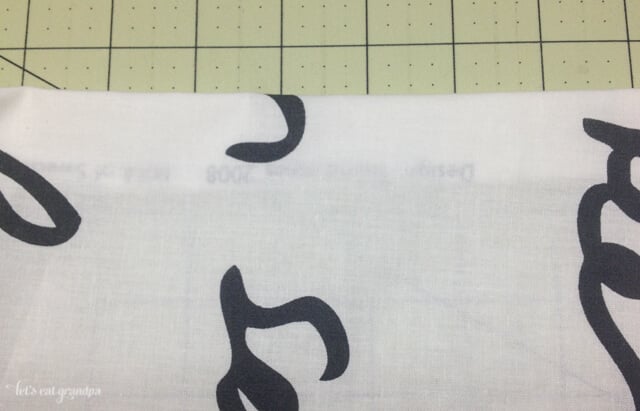
So I trimmed off the selvage (again, scissors would work just fine here).
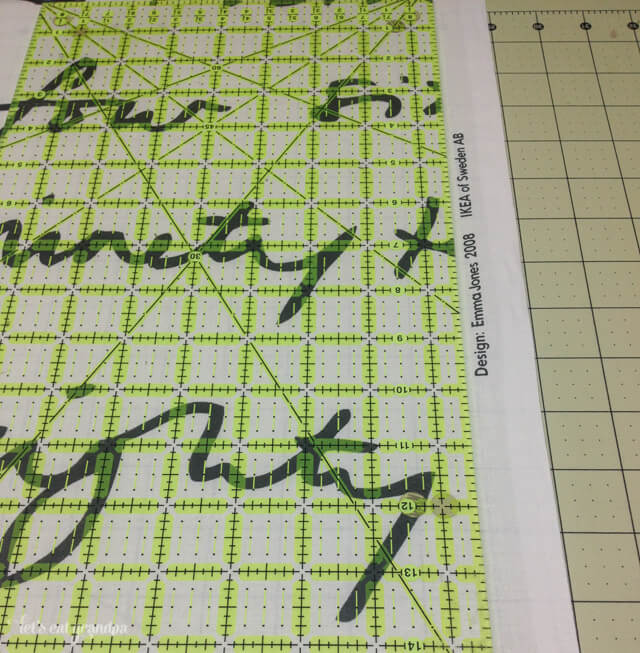
To create the side “hem” on the curtain, iron a 1″ hem along the entire 110″ length of the fabric. A ruler can help guide you.
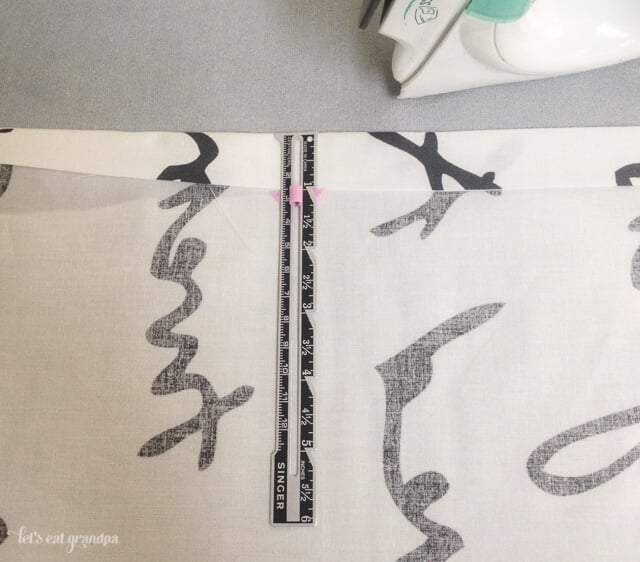
Turn the fabric over one more time, enclosing the raw edge in the fold, and iron. Pin to hold down the hem.

Sew the hem closed all the way down the curtain, using a narrow 1/8″ seam allowance (meaning 1/8″ away from the interior edge of the folded fabric). Do this to both sides, for both panels.
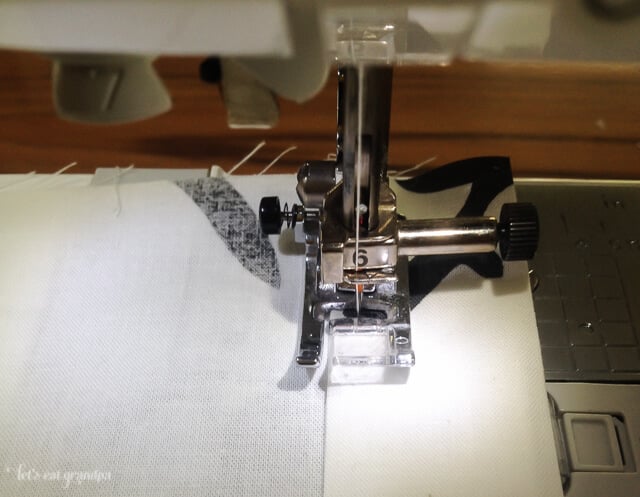
Creating the Rod Pocket
This tutorial used the “rod pocket” method for hanging. No grommets, tabs, or hardware to deal with.
To determine the height of your “pocket”, double the width of your curtain rod. I have a pretty hefty 1 1/2″ curtain rod, so my pocket is 3″ deep. If you have, for instance, a narrower 1/2″ curtain rod, your pocket only needs to be 1″ deep.
Add 3″ to your pocket height: for mine, 3″ + 3″ = 6″. 1″ of this will be just turning the fabric under (see the next paragraph and illustration), 2″ will be the ruffle at the top, and 3″ will be my pocket.
To create the rod pocket, fold over the fabric at the top 1″ and iron. (Important note: if you are using a directional fabric such as this text fabric, make sure you are making the rod pocket at the top of the curtain because you don’t want your print upside down!) If you’d like, use some fusible hem tape to hold this fold down (optional).
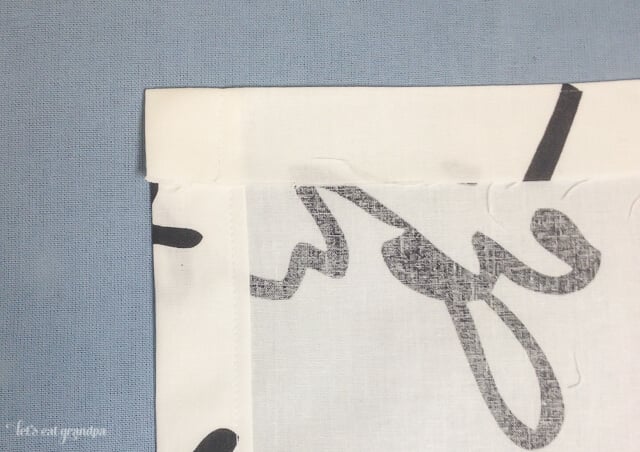
Then fold the fabric down 5″ (which is my original 6″ minus the 1″ fold). Iron the edge and pin in place:
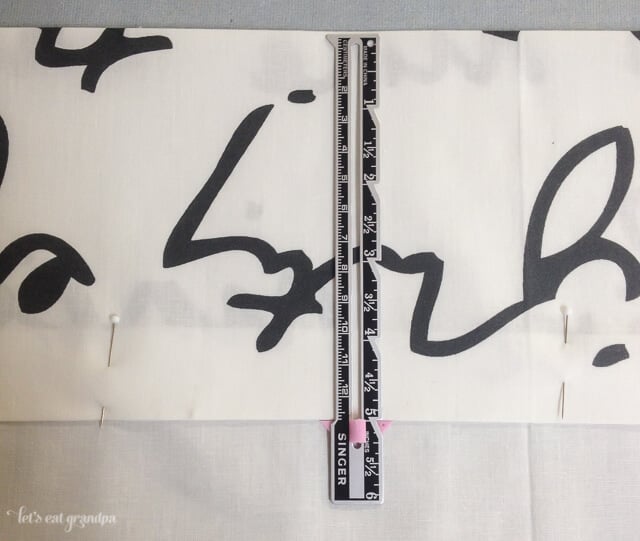
Sew the edge of the fabric in the same way you sewed the side hems above, with a 1/8″ seam allowance.
Because my pocket needs to be 3″ deep, I am going to sew another line 3″ above the seam I sewed (not the folded edge of the fabric). I used a ruler and drew a line 3″ above my seam all the way across using a disappearing ink marker. This leaves 2″ above the line for the ruffle.
Note: if your rod pocket needs to be, for instance, only 1″ deep, sew the line 1″ above the seam you sewed.
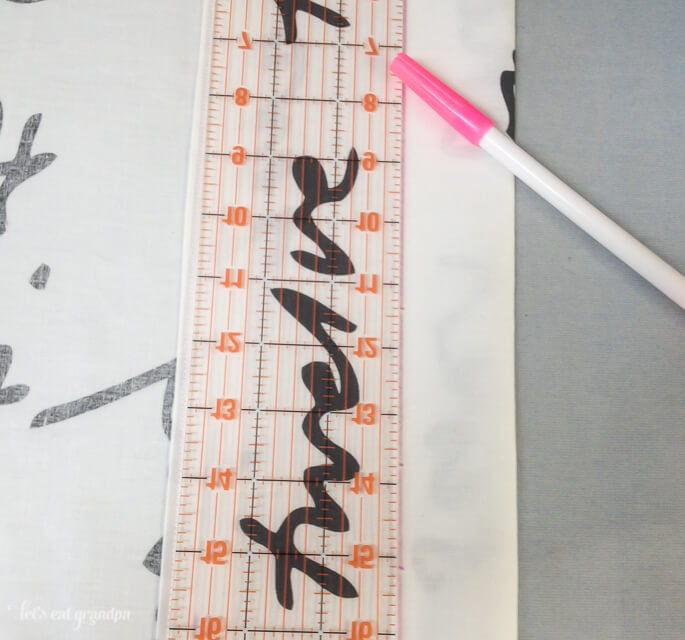
Sew down the line you just drew. You’ve completed the rod pocket for your curtain! Follow these directions to make the rod pocket for the other panel as well.
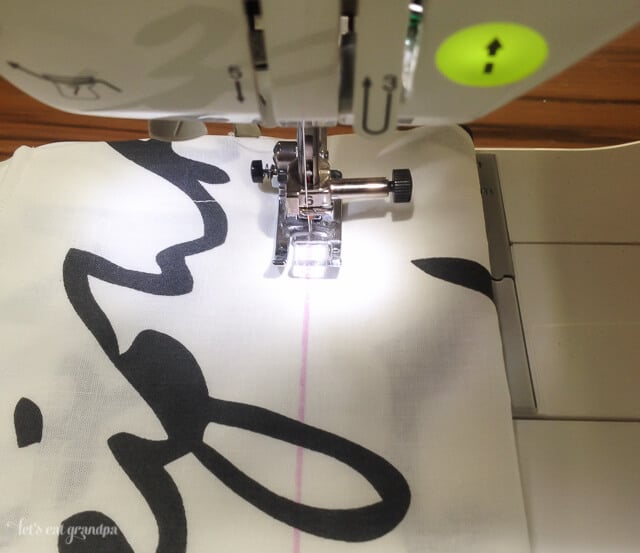
Hemming the Curtains
To hem your simple curtains, hang them up. You’ll notice I have quite a bit of fabric pooling at the bottom. Some people like this look, but I find it a little messy, especially with a huge dog who will try and sit on them. So I hem them to floor length.
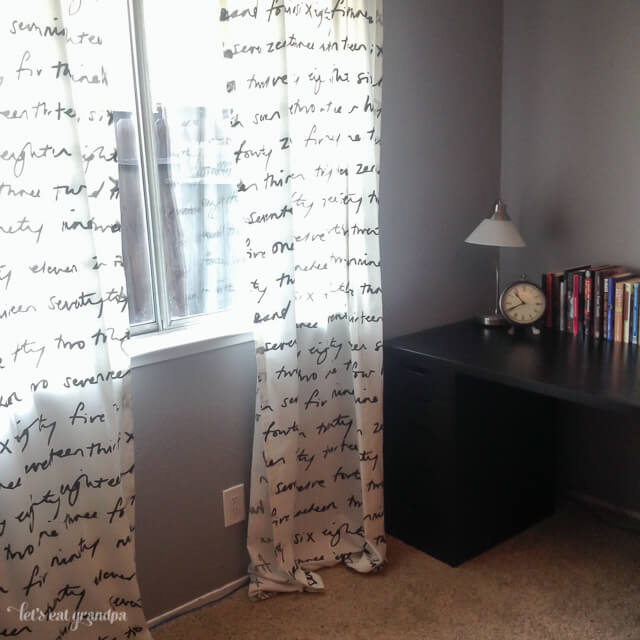
Pin the curtains so that they just brush along the floor. I have pins both at the fold and to hold the excess fabric behind the curtain:
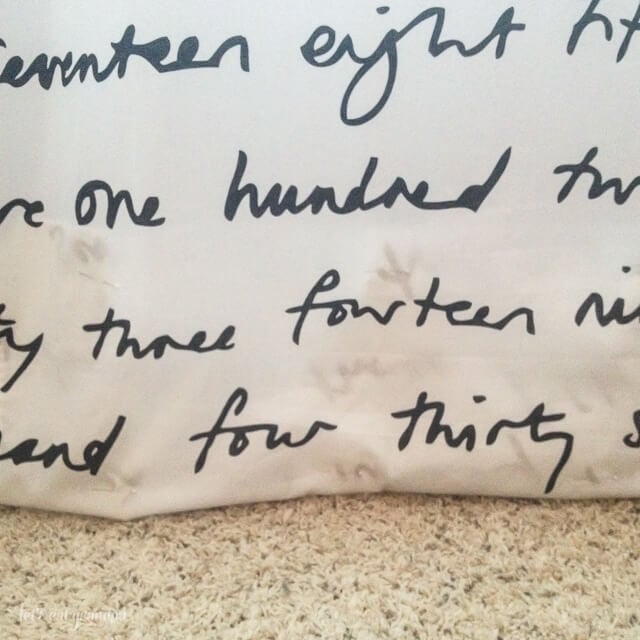
Iron the fold so that you can use it as a guide.
Your calculation should have left you with 8 or 9 inches of extra fabric for the hem. I like a hefty 6″ hem — it allows the curtains to hang better, and because the bottom is heavier, they aren’t as likely to randomly float away from the wall if there’s a little draft.
Measure 7″ away from the ironed fold, and draw a line. This leaves 1″ to fold under and 6″ for the hem.
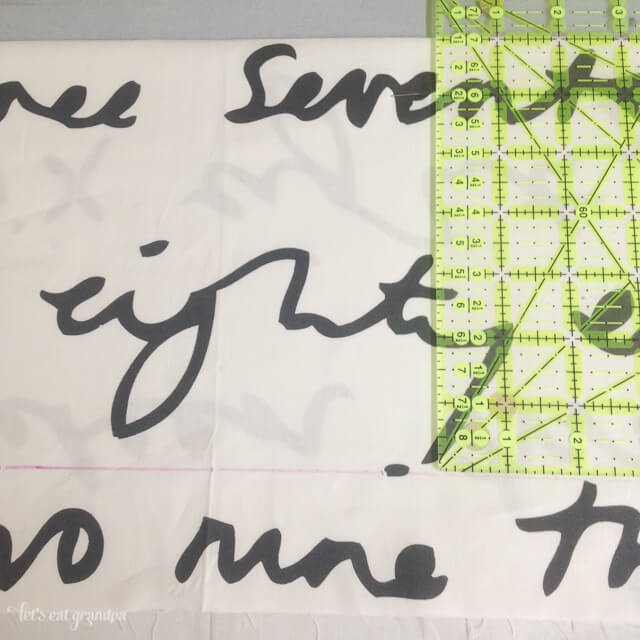
Cut along the line you just drew. I used scissors. Fold over the fabric at the top 1″ and iron. If you’d like, use some fusible hem tape to hold this fold down (optional).

Then fold your hem back along on the ironed fold line you already made and sew down the hem, in the same way you sewed down the hem for the rod pocket above.


SIMPLE CURTAIN PATTERN
Equipment
- Scissors If you don't have the above cutting tools
Supplies
- Fabric See full tutorial for determining yardage
- Coordinating thread
Instructions
- Measure out the full height of your first panel and cut your fabric.

- To create the side hem on the curtain, iron a 1" hem along the entire length of the fabric.

- To determine the height of your rod pocket, double the width of your curtain rod and add three inches.
- Fold over the fabric at the top 1" and iron.

- Then fold the fabric down the height of your rod pocket (above), minus 1". Iron the edge and pin in place. Sew the edge of the fabric.

- Sew a line above the seam you just sewed that is double the width of your curtain rod. This is where you will put your curtain rod. The fabric above is for the ruffle.

- Hang your curtains. If they need hemming pin the bottom of the curtain so it just brushes the floor, and hem.

Voila! You’ve made this simple curtain pattern! If you have any questions, please leave them in the comments and I will try and clarify or modify the tutorial to be more clear.
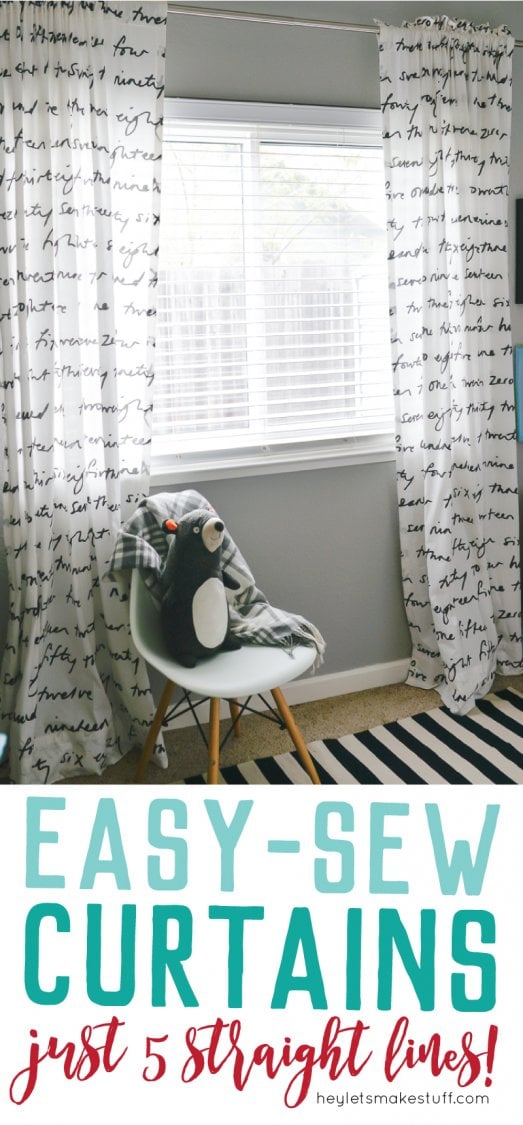
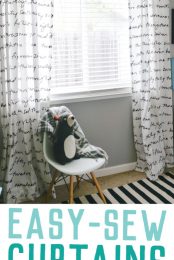
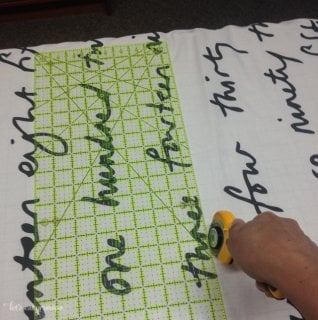


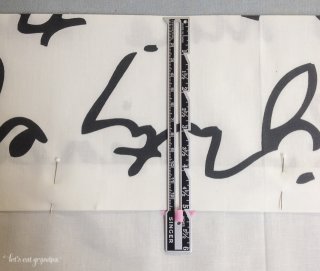
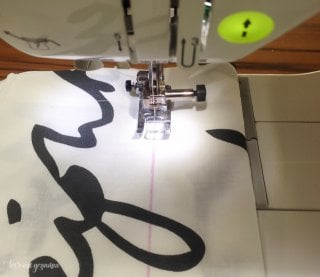
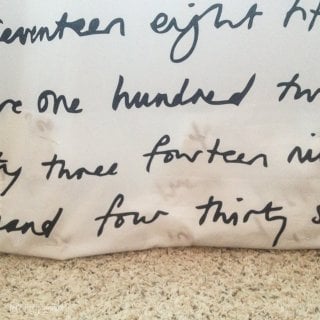


Comments & Reviews
Nicole says
This is a great tutorial, thank you! I wish I had windows to do this for! I’ll be pinning for when I do!
Julie Bagamary says
Nice – the words on the fabric adds interest.
Julie Bagamary says
Nice. This writing on the fabric adds a lot of interest.
Jessy @ The Life Jolie says
These are awesome- I am terrible at sewing anything beyond a button, so this is right up my alley! Would you mind if I shared a text link to this on Friday (I link things I like each Friday)?
I stopped by from Tuesdays at Our Home.
Lori East says
Thanks for the great tutorial! Just finished my first set for my grandson on the way nursery. They are precious!! I was wondering if there should be an opening on the bottom hem, but I suppose they would be fine either way. :)
Cori George says
You can leave a hole, or you could stitch that up if you’d like :)
Ingrid says
Any hints for working with sheer material to make sheer curtains?
Cori George says
I don’t work with a lot of sheer fabrics, but when a fabric is particularly shifty, you can always use spray starch to help stabilize it.
Nicole says
Thanks for this awesome tutorial! I made my first-ever pair of curtains using it last year, and now I’m excited to make more. Thank you so much!
Nancy says
I liked your tutorial. I have made curtains before, tabs, but its been quite a few years, so needed a refresher I need to line my bedroom curtains. Going to make tiers and a valance.
Do you have a tutorial on how to apply the lining? It is going to probably be muslin lined on cotton curtain material? Thanks!
Cori George says
Hi Nancy — I don’t have a tutorial for lined curtains — the only ones I’ve made since I started blogging are unlined. But I know there are a lot of tutorials out there — good luck!
gussie says
Thank you for easy to follow instructions! I have not made curtains before, but I knew there had to be a simple way to make them. I have a moderate amount of sewing experience, so your tutorial is very clear. I couldn’t find anything that I like for my girls’ rooms so I decided to make some! I chose a taffeta and a satin that I found on clearance at JoAnn’s for $3 per yard! I love the colors and the look of the fabric. Wish me luck!
Cori George says
Great! I’m so glad you’re finding my tutorial easy to follow. Please stop by and let me know how the finished product turned out! :)
jenn says
thanks for this tutorial, your instructions are nice and clear. I’m making curtains for my teenage son’s room. I’m recycling a bed sheet, and I bought some coordinating sheer fabric to go with it. I started this morning and so far, I’ve finished one sheer panel. Hopefully I’ll have them done by the weekend.
Cori George says
Awesome! I’m so glad my tutorial is clear and that your curtains are coming along!